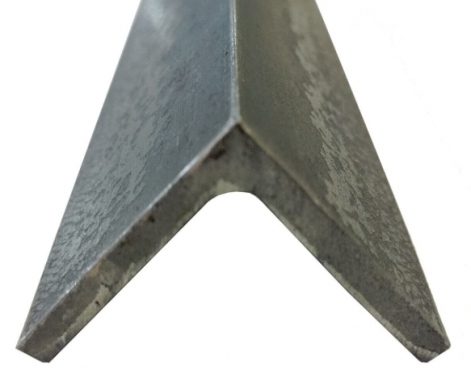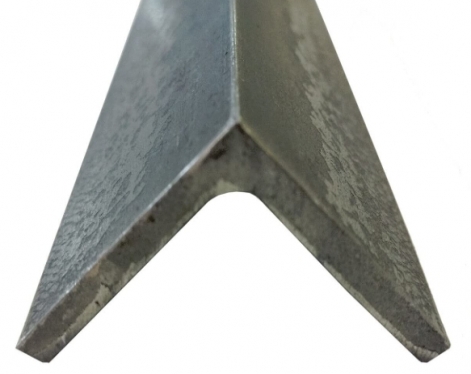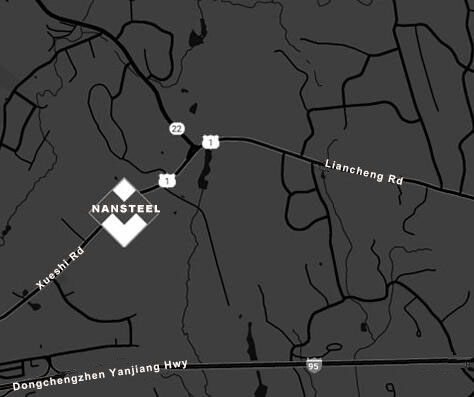Angle steel, commonly known as angle iron, is a long strip of steel with two sides perpendicular to each other to form an angle. Various load-bearing components can be made according to different structural requirements, and connectors can be manufactured between components. It is suitable for all kinds of buildings and engineering structures, such as beams, bridges, transmission towers, hoists, ships, industrial furnaces, reaction towers, container racks, cable trench supports, power piping, busbar support installation, etc.
Advantages of angle steel
1. Strength and economy
The cross-sectional design of the angle steel is very clever, which enables it to exhibit high strength when subjected to various loads. At the same time, it is relatively light in weight, and can effectively reduce the weight of the structure itself when building large structures. This not only reduces the difficulty of transportation and installation, but also reduces the cost of infrastructure construction, achieving multiple goals at one stroke.
2. Easy to connect and assemble
The unique shape of angle steel provides great convenience for its connection and assembly. When connecting components, whether welding, bolting or riveting, angle steel can be easily adapted. It can also be flexibly combined with other materials such as steel sections and steel plates to meet the construction requirements of different structures and facilitate the construction of diversified structural systems.
3. Good bending and corrosion resistance
From the perspective of cross-sectional characteristics, angle steel exhibits good bending resistance when bent, can withstand large bending loads, and is suitable for various structures subjected to bending forces. For example, the tower structure of a transmission tower will be subjected to bending force under the influence of external forces such as strong winds. The excellent bending resistance of angle steel can ensure that the transmission tower will stand firm. In addition, after hot-dip galvanizing or other anti-corrosion treatment, a protective film is formed on the surface of the angle steel, which makes it have good corrosion resistance. It can be used stably for a long time even in harsh environments such as humidity, acid and alkali, thus extending its service life and reducing the subsequent maintenance costs.

Disadvantages of angle steel
1. Torsional rigidity and force direction limitation
Although angle steel has many advantages, it also has some disadvantages that cannot be ignored. In terms of torsional performance, angle steel has relatively low torsional stiffness and performs poorly when subjected to torsional loads compared to other cross-section steels such as H-beams. In some structures that need to withstand large torques, such as the support structure of rotating parts of large machinery, if angle steel is used alone, it may not provide sufficient stability, and additional supporting structures are often required to assist, which undoubtedly increases the complexity and cost of the structure. Moreover, the performance of angle steel under different stress directions is obviously different, especially when subjected to longitudinal and transverse forces, its internal stress distribution is uneven, which easily leads to uneven deformation, which to a certain extent limits its application in certain structures that have strict requirements on the direction of force.
2. Section utilization and fatigue problems
From the perspective of cross-sectional shape, the cross-sectional utilization of angle steel has certain limitations. Under certain load conditions, part of the cross-sectional area of the angle steel cannot fully exert its bearing capacity, resulting in material waste and reducing the overall efficiency of the structure. In addition, when subjected to frequent dynamic loads, angle steel structures, especially the connection parts, are prone to fatigue failure.
3. High processing accuracy requirements
During the welding and assembly process of angle steel, high processing accuracy is required. If the size and position of the weld are inaccurate during welding, or if there are deviations in the angle and length of the angle steel during assembly, it may affect the overall strength and stability of the structure. When processing angle steel, various dimensions and process parameters must be strictly controlled to ensure that the processing accuracy meets the requirements.
Summarize
As a commonly used steel, angle steel plays an important role in many fields such as construction and machinery manufacturing due to its many advantages such as high strength, light weight, easy connection, good bending resistance, wide application, corrosion resistance and economy. However, angle steel also has disadvantages such as low torsional stiffness, limited force direction, limited cross-sectional utilization, easy fatigue failure and high processing precision requirements.
In practical applications, we should fully understand the advantages and disadvantages of angle steel, and reasonably select and use angle steel according to specific engineering requirements and structural characteristics. By optimizing design and improving processing technology, we can maximize its advantages and avoid disadvantages, so that angle steel can show its greatest value in various projects and provide reliable protection for the safety and stability of the project.
Read more: EN 10056-2 1993 Angle Steel
Advantages of angle steel
1. Strength and economy
The cross-sectional design of the angle steel is very clever, which enables it to exhibit high strength when subjected to various loads. At the same time, it is relatively light in weight, and can effectively reduce the weight of the structure itself when building large structures. This not only reduces the difficulty of transportation and installation, but also reduces the cost of infrastructure construction, achieving multiple goals at one stroke.
2. Easy to connect and assemble
The unique shape of angle steel provides great convenience for its connection and assembly. When connecting components, whether welding, bolting or riveting, angle steel can be easily adapted. It can also be flexibly combined with other materials such as steel sections and steel plates to meet the construction requirements of different structures and facilitate the construction of diversified structural systems.
3. Good bending and corrosion resistance
From the perspective of cross-sectional characteristics, angle steel exhibits good bending resistance when bent, can withstand large bending loads, and is suitable for various structures subjected to bending forces. For example, the tower structure of a transmission tower will be subjected to bending force under the influence of external forces such as strong winds. The excellent bending resistance of angle steel can ensure that the transmission tower will stand firm. In addition, after hot-dip galvanizing or other anti-corrosion treatment, a protective film is formed on the surface of the angle steel, which makes it have good corrosion resistance. It can be used stably for a long time even in harsh environments such as humidity, acid and alkali, thus extending its service life and reducing the subsequent maintenance costs.

Disadvantages of angle steel
1. Torsional rigidity and force direction limitation
Although angle steel has many advantages, it also has some disadvantages that cannot be ignored. In terms of torsional performance, angle steel has relatively low torsional stiffness and performs poorly when subjected to torsional loads compared to other cross-section steels such as H-beams. In some structures that need to withstand large torques, such as the support structure of rotating parts of large machinery, if angle steel is used alone, it may not provide sufficient stability, and additional supporting structures are often required to assist, which undoubtedly increases the complexity and cost of the structure. Moreover, the performance of angle steel under different stress directions is obviously different, especially when subjected to longitudinal and transverse forces, its internal stress distribution is uneven, which easily leads to uneven deformation, which to a certain extent limits its application in certain structures that have strict requirements on the direction of force.
2. Section utilization and fatigue problems
From the perspective of cross-sectional shape, the cross-sectional utilization of angle steel has certain limitations. Under certain load conditions, part of the cross-sectional area of the angle steel cannot fully exert its bearing capacity, resulting in material waste and reducing the overall efficiency of the structure. In addition, when subjected to frequent dynamic loads, angle steel structures, especially the connection parts, are prone to fatigue failure.
3. High processing accuracy requirements
During the welding and assembly process of angle steel, high processing accuracy is required. If the size and position of the weld are inaccurate during welding, or if there are deviations in the angle and length of the angle steel during assembly, it may affect the overall strength and stability of the structure. When processing angle steel, various dimensions and process parameters must be strictly controlled to ensure that the processing accuracy meets the requirements.
Summarize
As a commonly used steel, angle steel plays an important role in many fields such as construction and machinery manufacturing due to its many advantages such as high strength, light weight, easy connection, good bending resistance, wide application, corrosion resistance and economy. However, angle steel also has disadvantages such as low torsional stiffness, limited force direction, limited cross-sectional utilization, easy fatigue failure and high processing precision requirements.
In practical applications, we should fully understand the advantages and disadvantages of angle steel, and reasonably select and use angle steel according to specific engineering requirements and structural characteristics. By optimizing design and improving processing technology, we can maximize its advantages and avoid disadvantages, so that angle steel can show its greatest value in various projects and provide reliable protection for the safety and stability of the project.
Read more: EN 10056-2 1993 Angle Steel









